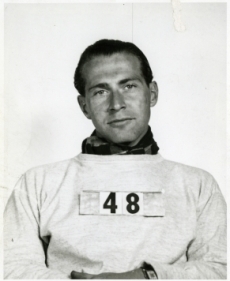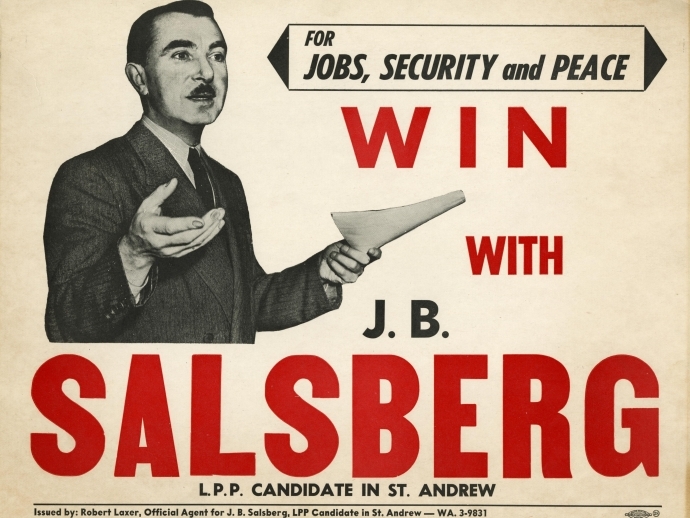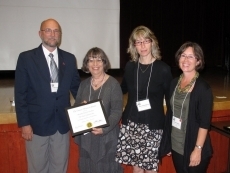As November marks a time for remembering war related stories of sacrifice and survival, the OJA is highlighting the life story of Henry Cassel (previously Heinz Kassel). Henry was a German refugee during the Second World War who was classified as an enemy alien by the British government. He spent two years in an internment camp for prisoners of war (POWs) in Quebec. He later became a naturalized Canadian citizen and enlisted in the Canadian military.
Heinz was born on October 25, 1912 in Aschaffenburg, Germany to Adolf and Olga Kassel. Adolf owned a successful banking business which he had inherited from his father. The family resided above the bank and lived a comfortable life during these early years. They moved to Frankfurt around 1920 after Adolf sold his business to buy a partnership in a bank there.
Heinz’s parents had hoped that he would one day become a corporate lawyer. In 1931, in preparation for his future career, he began studying law and economics at Frankfurt University. He enjoyed his initial university years. However, after Hitler’s rise to power in 1933 he became alarmed when his non-Jewish university friends began ignoring him and when the German government passed laws forbidding Jews from practicing law in court. Determined to leave Germany and seek out a better life elsewhere, he begged his parents to immigrate with him to the United States. They refused to go, unwilling to leave behind the life they had worked so hard to build. In accordance with his parents’ wishes, Heinz relocated to nearby Italy instead of the US in 1934. He learned Italian and eventually secured a job with an engineering firm.
Sensing that the political climate in Italy was becoming dangerous for Jewish people, Heinz applied for immigration to the US in early 1939. Eager to leave Italy, he relocated to London to await the approval of his US visa. He left just in time – Britain declared war on Germany less than a week after his arrival. His parents, in turn, managed to escape to Holland. Soon after Britain’s declaration, all immigrants from enemy countries were considered enemy aliens and suspected of being spies.
On May 12, 1940, the British military arrested Heinz and interned him with other German immigrants and POWs. He believed his detainment was only a precautionary measure and that he would be cleared within a few days. However, the British shipped him to the Isle of Man where he remained for several months. Fearing an invasion, the British shipped 3,000 of the POWs, including Kassel, to Quebec, where he was briefly interned at a POW camp set up at the Plains of Abraham. In October 1940, he was moved with 736 other refugees to an abandoned railway yard (later known as “Camp N”) in Newington, near Sherbrooke, Quebec. While there, he confronted a great deal of anti-Semitism from the guards.
While he was interned in Quebec, the Canadian Jewish Congress (CJC) interviewed him and other Jewish prisoners in order to lobby for their release. Realizing that the internees were not POWs, the Canadian government declared the camp a refugee camp in 1941. By October 1942, the CJC was successful in helping Heinz secure employment with Benjamin Pape & Company in Toronto.
Heinz met Reta Freeman in Toronto and they were married in November 1944. Reta was born and raised in Toronto. After their nuptials, they were both briefly classified as enemy aliens and had to report to the RCMP on a regular basis. Shortly thereafter, Heinz enlisted in the Royal Canadian Army and was sent to basic training in Manitoba. On January 21, 1946 he was granted landed immigrant status, and in April of that year, he became a citizen.
After the war, Heinz learned that his parents as well as other relatives had been transported to concentration camps and had not survived. He was certainly one of the few fortunate ones to leave the country, despite the circumstances of his removal. He resented being interned for so long, but did not blame the British for rounding him up with other Germans based on their initial fears regarding enemy aliens. His feelings about Canada's treatment of him during that time, however, were not as sympathetic. Reta passed away in August 1962 and Henry later remarried Esther Cassel. He passed away at the age of 96 in February 2009.
The records of Henry Cassel were donated to the Archives by his sons, Andrew and Richard. The collection documents his family and personal life as well as his experience as an internee. Records include his autobiography, family photograph albums, legal records, a diary and hand-made notebook written by Henry during his interment, correspondence between Henry and his parents, and, correspondence between Henry and several Jewish agencies. Also included are newsletters that were produced during the 1990s by ex-internees who had kept in touch over the years. These remarkable records are invaluable in documenting the Canadian internment camps, the refugee and immigrant experience, Canada’s treatment of enemy aliens, as well as the Jewish community’s response.



